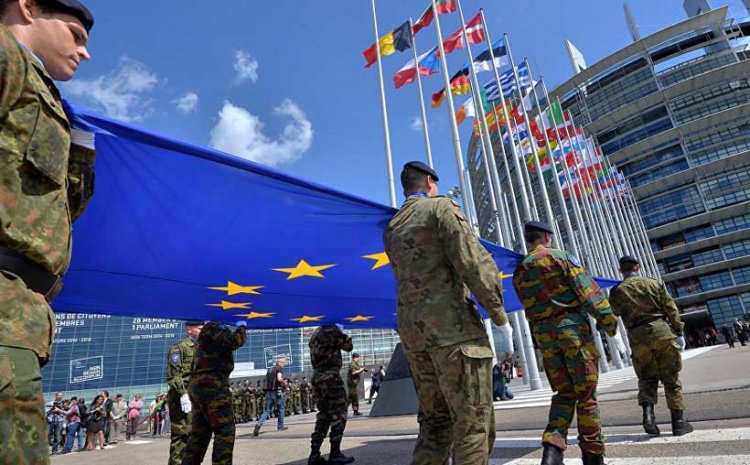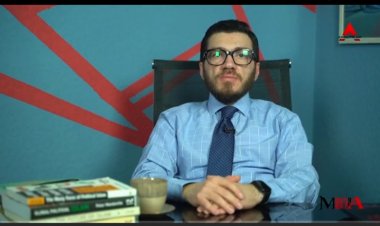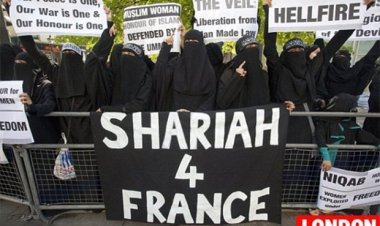Common Security and Defense Policy: A European Desire of Self Reliance
With the Common Security and Defense Policy, the EU has now decided to be a security and defense actor in an uncertain world. The political framework is in place. But do the European States have the tools for it? Why do the Europeans want a common policy amongst themselves when most of the EU members are also NATO members? Is there a need for having two parallel defense structures in Europe?

Overview
By Peder Foss
A brief history of the European Union
The European Union has its roots in the European Coal and Steel Community (ECSC), which aimed to bring European countries closer economically after the Second World War. Another reason for the ECSC was to bring coal and steel – two important components for arms manufacturing and war – under supranational control. The next major step was the Treaty of Rome in 1957, following which more institutions were established. Within ten years, they were merged to create the creation of the European Community. The European Union (EU) was created via the Maastricht Treaty, as were the three pillars of the EU. These three pillars consist of the European community, a common foreign and security policy, and cooperation in terms of justice and home affairs between member states. Thus, the EU would be an economic, social, environmental and security community.
The institutions of the EU include The European Council, which is the political body for the head of states. The Council of the European Union consists of the ministers from the member states, such as the ministers of defense, the ministers of foreign affairs, and other political areas. The European Parliament works quite similar to the national parliaments and approves the members of the institutions mentioned below:
- The European Commission is responsible for international negotiations and the guardian of the treaties. Each member country has one representative in the commission.
- The Court of Justice of the European Union is the judicial power of the EU. It solves legal disputes between member countries, institutions, businesses, and individuals.
- The European Central Bank contains the national central banks of the countries that adopted the Euro as their currency.
The European Common Security and Defense Policy (CSDP)
The idea of having a common European defense arrangement emerged after the Second World War. The first European defense institution was the Western Union (WU), created in 1948. It was expanded and renamed the Western European Union (WEU) in 1954. The WEU remained as a forum for European defense till 1984 when the defense and foreign ministers of the European Community made a declaration to expand to other areas than the European defense. The end of the Cold War changed Europe and WEU. The European Community began to expand. The WEU decided in 1992 to implement the Petersberg Tasks, which are a combination of military and civilian tasks for defense and security in and outside Europe. The military tasks are peacemaking (enforcement), peacekeeping, rescue missions, and humanitarian missions. The civilian tasks are rebuilding in the post-armed conflict areas. These tasks will remain in the European Common Security and Defense Policy (CSDP), with which the WEU was integrated into the European Union. The WEU was dissolved in 2011.
With the CSDP, the EU has now decided to be a security and defense actor in an uncertain world. The political framework is in place. But do the European States have the tools for it? The military goal is to have about 50,000 to 60,000 combat-ready troops for conducting the Petersberg Tasks. These troops have intelligence, logistical, air and naval support. These units must be able to sustain military operations for a year. The military units shall be ready for deployment within 60 days. A crisis can occur much faster than that, so the EU has created battle groups to respond faster. There are 18 battle groups within the EU, and two of them rotate on the high level of readiness every sixth month. These battle groups contain about 1500 soldiers in a battalion-sized unit with additional support. These units are supposed to be self-sustained for 30 days. The battlegroups contain troops from several EU countries.
The requirement for using the security and the defense tools in the Petersberg Tasks outside the EU is usually on a mandate by the UN Security Council. However, there are problems with the EU Security and Defense. The battlegroups mentioned earlier have never been deployed. There is an issue with the political will to use the battle groups, especially when unanimous among the member states is a requirement. There are also doubts about whether the EU can and wants to respond to a major crisis requiring 50,000 to 60,000 troops. The EU has been involved in military operations outside the EU and successfully so. However, these operations are usually in low-intensity conflicts. Another question that may arise is why the EU is doing this when there is already a powerful military alliance in Europe, the North Atlantic Treaty Organization (NATO).
NATO
It was created in 1949 to prevent the Soviet Union from expanding further West. The Soviet Union replied with the creation of the Warsaw Pact in 1955. These two alliances faced each other, with their dual purpose being to defend against the other. The end of the Cold War changed NATO to be a global power as well. NATO was active in putting an end to the armed conflicts in the Balkans in the 1990s. The North Atlantic Treaty contains 14 articles. Most importantly, Article 5 can be called the "The Three Musketeers" article; "One for all, all for one." It is the agreement and obligation to defend every single member state if it is attacked.
Getting the Tools
The US has fewer different weapon system manufacturers than its European counterparts. This causes a problem for European Union countries who want to sell their weapon system on the international market. The European arms manufacturers compete against each other and with the Americans without proper regulation, without driving down the cost of developing new weapon systems. With intense competition against each other, there is an inefficient allocation of different weapons systems across manufacturers. Therefore, the EU might domestically find it difficult to find the tools to execute their common defense policy and security.
The Discussion
Why do the Europeans want a common policy amongst themselves when most of the EU members are also NATO members? Is there a need for having two parallel defense structures in Europe? Maybe, or maybe not. It depends on how the Europeans perceive the United States. Europe has been very dependent on the United States for defense since the end of the Second World War and through the Cold War. It can be problematic to be dependent on the goodwill of others for the defense. Through the post-Second World War period, the tensions between the US and the Europeans caused France to leave NATO's military structures while remaining as a political member in 1966. France forced all foreign forces to leave the French soil, and NATO was forced to move the headquarter from Paris to Brussels.
A more efficient approach would be to let NATO deal with military matters and the EU with the civilian tasks. Perhaps the EU and the Europeans need the US more than the US needs the EU and Europeans. The EU is an economic giant, but not so when it comes to defense and security. The European intelligence services and the police share a lot of information within their fields of responsibility. But the defense requires more resources than having the police share information about organized crimes or for the intelligence services to share information about certain individuals. One weakness of the EU is the contradiction between unanimous decision-making and the declaration of unity and support if a member state is attacked. NATO's Article 5 is stricter and more direct about what all NATO members must do if a NATO member is attacked. The Russian-Ukrainian conflict is a crisis between the US, NATO, Russia, and Ukraine. There is not a word said about using the Petersberg Tasks, nor to deploy forces to the EU borders. While the EU can handle low-intensity conflicts, the conflicts in the Balkans and Ukraine indicate the EU does not have the will nor the resources to handle a major crisis.
Disclaimer: This article is author’s individual scholastic contribution and does not necessarily reflect the organization’s viewpoint.






















